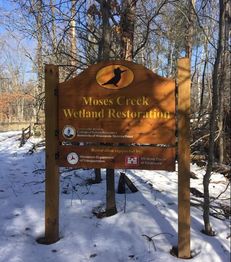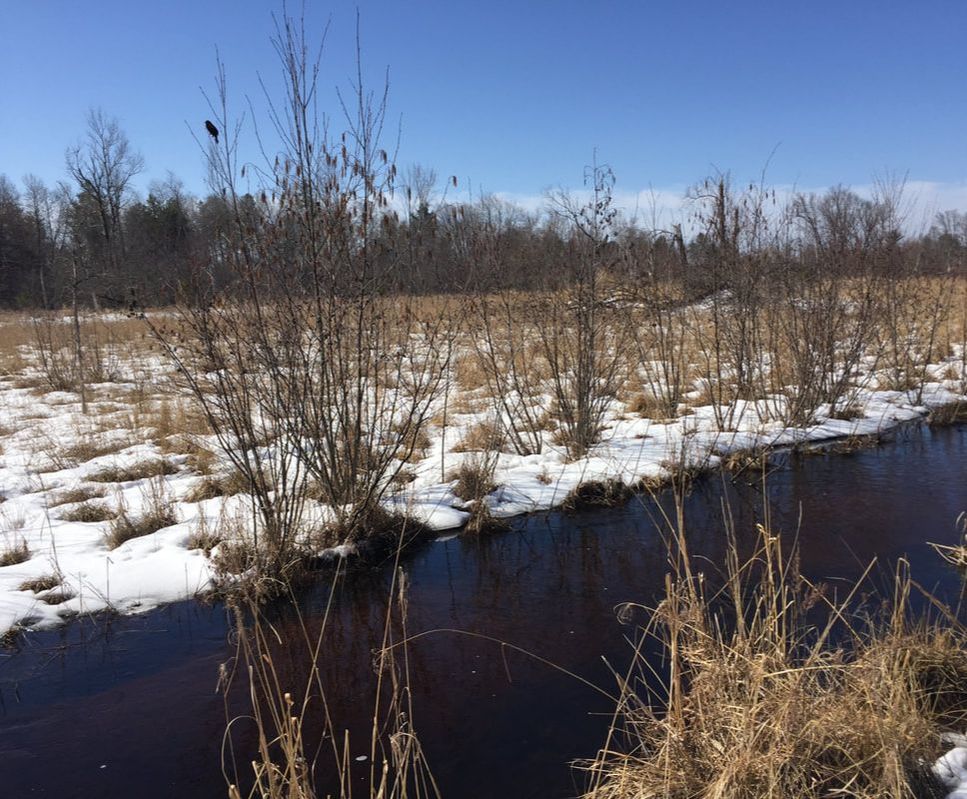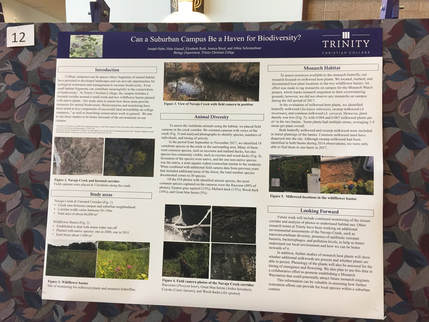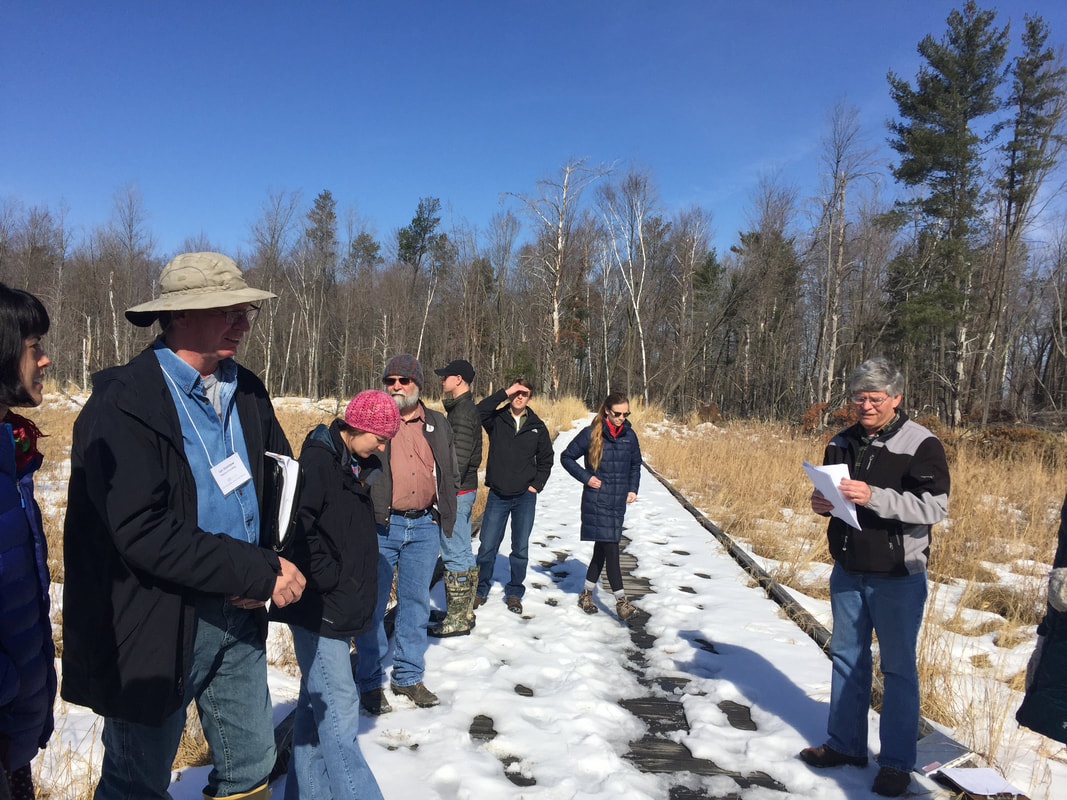|
Moses Creek Wetland Restoration in Stevens Point, Wisconsin How can we be co-workers with Christ in caring for the creation? One way we can work to support and bring back native plants and animals as well as functioning ecosystems is through ecological restoration. Yes, humans have radically changed landscapes, often reducing biodiversity and imperiling unique habitats, be we can also work bring back communities and species that have been lost or harmed. In April, I had the opportunity to travel to Stevens Point, Wisconsin, for a chapter meeting of the Society for Ecological Restoration. I soaked in presentations on caring for waterways, prairies, forests, and threatened species. Here is just a sampling of the kinds of research and management questions I heard discussed: What are emerging pollutants for which we should consider monitoring? How can we assess stream water quality? How can we best use fire as a management tool? Are restored prairies providing habitat for a diverse bee community? How have populations of the trumpeter swan fared following re-population efforts? I also had the opportunity to share the work my students and I have been doing in a poster. Can a Suburban Campus Be a Haven for Biodiversity? Poster sharing work on campus biodiversity, particularly from analysis of field cameras placed around campus and from assessment of local milkweed populations On the last day of the conference, we headed out from the meeting rooms and into the field. My trip took me to Moses Creek, a restored area that is part of Schmeekle Reserve. I stepped out of the bus and onto a boardwalk through the restoration area, which still had significant snow cover from the snowstorm that had hit the area the weekend before. Moses Creek was a wetland that through human alteration of waterways essentially dried out and no longer supported wetland species. The connection between the creek and the soils around it had been largely cut-off. However, through restoration, that connection between creek and floodplain has been re-established and wetland species have returned to the site. Wetlands are important habitats that “soak up” water in the landscape and help maintain water quality. I learned that, historically, Moses Creek would have been a more meandering, braided stream, and at a higher elevation that it is today. However, restoration efforts need to take into account both historical and modern context. Today there are neighboring homes in the area, so the restoration plan needed to ensure that changes to the landscape wouldn’t result in flooding of the surrounding area. This meant major work to change the area’s elevation while preserving the wetland-formed soils that remained on the site. The top layer of organic soils was excavated and stored so that the underlying sand could be removed to lower the site elevation. Then the organic soils were added back, and a shallow stream channel was established to better connect the water with the flood plain. Quite a monumental task! Native plants were then seeded and also came from the seed bank and upstream native community. While observing the site, I could see the evidence of the plant community coming back, and I was also rewarded with views of a Pileated woodpecker (heading into the nearby forest), a downy woodpecker, a northern flicker, and several red winged blackbirds. Restoration is rarely (never?) something that can be considered entirely complete. Yes, the major changes to the stream channel and site elevation are complete. Yes, native wetland species are rebounding on the site. However, ongoing concerns and management needs are always a part of the picture. For Moses Creek, invasive species such as hybrid cattails and buckthorn are a concern—if they come to dominate the site, fewer resources will be available for other species to thrive. Ecological restoration is a way to care for God’s creation and to learn more about the workings of the creation. It also provides an area where people can enjoy the beauty and complexities of functioning ecosystems—in this case, not only land managers or researchers, but also anyone who cares to walk the trail at this popular preserve. I am grateful for the chance I had to enjoy the beauty of this site and learn firsthand from people managing and studying the ecosystem there. Tour of Moses Creek Wetland. My thanks to our guides, Jon Gumtow and James Cook!
0 Comments
|
Abbie SchrotenboerI'm a biology professor at Trinity Christian College. I'll be using this page to share interesting stories related to ecology and conservation at Trinity and in the Chicago area (although I might be tempted to expand my geographic focus upon occasion). Archives
December 2020
Categories |




 RSS Feed
RSS Feed
